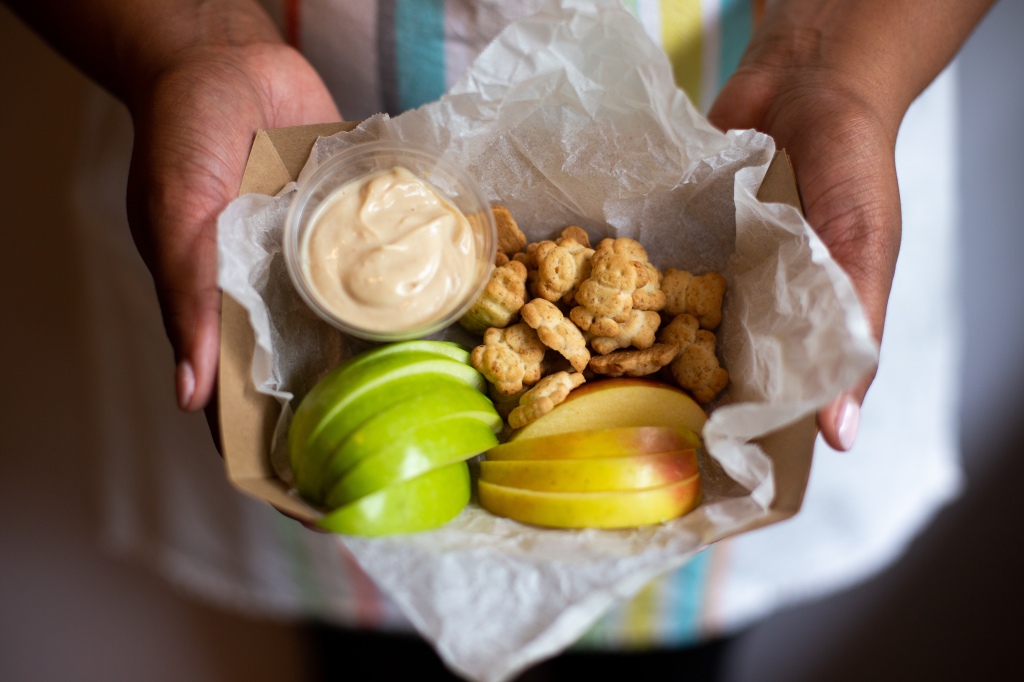According to the Food and Research Action Center’s February 2020 Breakfast Scorecard, “14.6 million children ate breakfast at school on an average day in the 2018–2019 school year.” This is an increase of over 46,000 students per day from the previous year. Much of the growth has been outside of the traditional before-school breakfast in the cafeteria – using a variety of alternative models including breakfast in the classroom, grab-and-go breakfast carts/kiosks, and mid-morning breakfast breaks. Changes in location have led to changes in menus with increases in self-stable, packaged, and easier-to-transport items. While there is nothing inherently wrong with packaged foods (which must meet National School Breakfast Program regulations), some districts are struggling with the perception of school breakfast as lots of sugars and other carbs.
School Breakfast Trends: The expectations and perceptions of student customers, especially teenagers, is also changing. Based on the breakfast choices they enjoy in fast food and quick-serve locations, they expect to also see options like protein boxes, grain bowls and fruit smoothies at school. Savvy school nutrition directors are upping their breakfast game to be more restaurant-like with everything from omelet bars and overnight oats to homemade cinnamon rolls and specialty parfaits. Many of these new school breakfast items are specifically created to decrease sugar while enhancing protein content. Looking for ways to make breakfast stick, school chefs are focusing on the right balance of protein, fat and fiber.
PB&J Greek Yogurt Parfait https://healthyschoolrecipes.com/recipes/pbj-greek-yogurt-parfait/
The Peanut Butter Solution: With those criteria, it is not surprising that the “peanut butter solution” comes to mind. Peanut butter is popular with students and is an affordable source of protein with healthy plant-based fiber (6% DV) and good fats. Peanut butter is also very versatile from a culinary standpoint – easy-to-use in baked goods, blended items and spreadable applications. However peanut is one of the top eight food allergens so schools must implement strategies to keep students with allergies safe at school. While some studies estimate that 2% of children are allergic to peanuts, the good news is that as many as 20% of peanut allergies may be outgrown, while new treatments are being developed and tested. The peanut industry wants everyone with allergies to be safe so they support the latest research and resources at Prevent Peanut Allergies.org.
Keeping Students Safe: The goal of school breakfast is to offer as many healthy, appealing food options to as many students as possible, while ensuring that all customers with food allergies are protected. Three important ways to accomplish this goal are:
- Training: Ensure that all nutrition staff receive regular training on all food allergies. Everyone who works with food or in the cafeteria needs to know how to avoid cross-contamination and how to recognize food allergy reactions.
- Planning: Careful planning is the key to preventing problems. Each student with a food allergy should have an individualized plan that include school foodservice, nurses, classroom staff and coaches.
- Labeling: Make certain that all products containing an allergen are clearly labelled with text, photo or colors, as appropriate for the age and reading level of students. Check any new products and recipes for proper labeling.
Need helping with ideas, webinars, training videos and more? Visit Managing Peanut Allergies and click on the schools section. You can also visit the School Nutrition Association’s Food Allergy Resource Center.
 Peanut butter granola bars https://healthyschoolrecipes.com/recipes/peanut-butter-granola-bar/
Peanut butter granola bars https://healthyschoolrecipes.com/recipes/peanut-butter-granola-bar/
Peanut Butter Recipes: Delicious peanut butter recipes for school breakfast are available through a variety of sources, including the USDA Recipe Box, state department of education resources and Healthy School Recipes.
 Peanut Butter Vanilla Yogurt Dip: https://www.nationalpeanutboard.org/recipes/schools/peanut-butter-vanilla-yogurt-dip.htm
Peanut Butter Vanilla Yogurt Dip: https://www.nationalpeanutboard.org/recipes/schools/peanut-butter-vanilla-yogurt-dip.htm
This blog post is sponsored by the National Peanut Board. Learn more about the benefits and practicalities of serving peanut products in K-12 at PeanutsinSchools.org.
source https://betterweightloss.info/school-breakfast-trends-peanut-allergy-facts-and-keeping-students-safe/


No comments:
Post a Comment